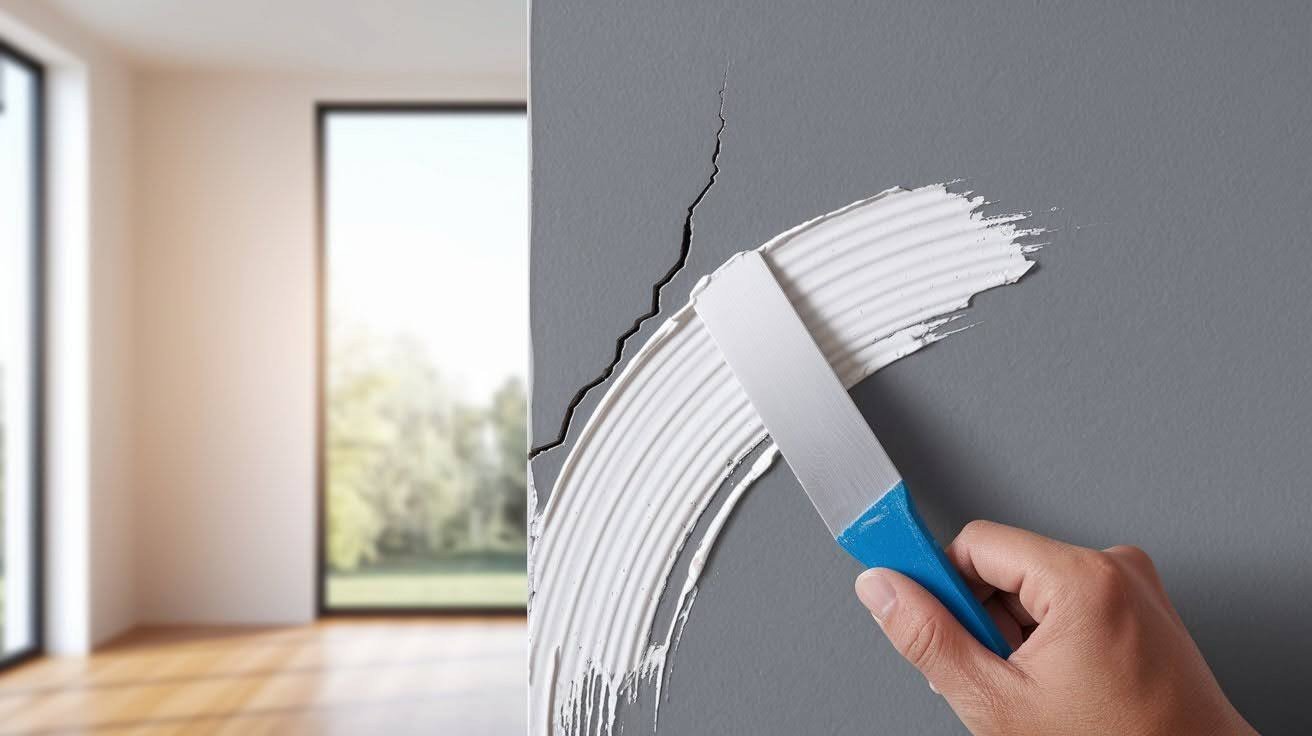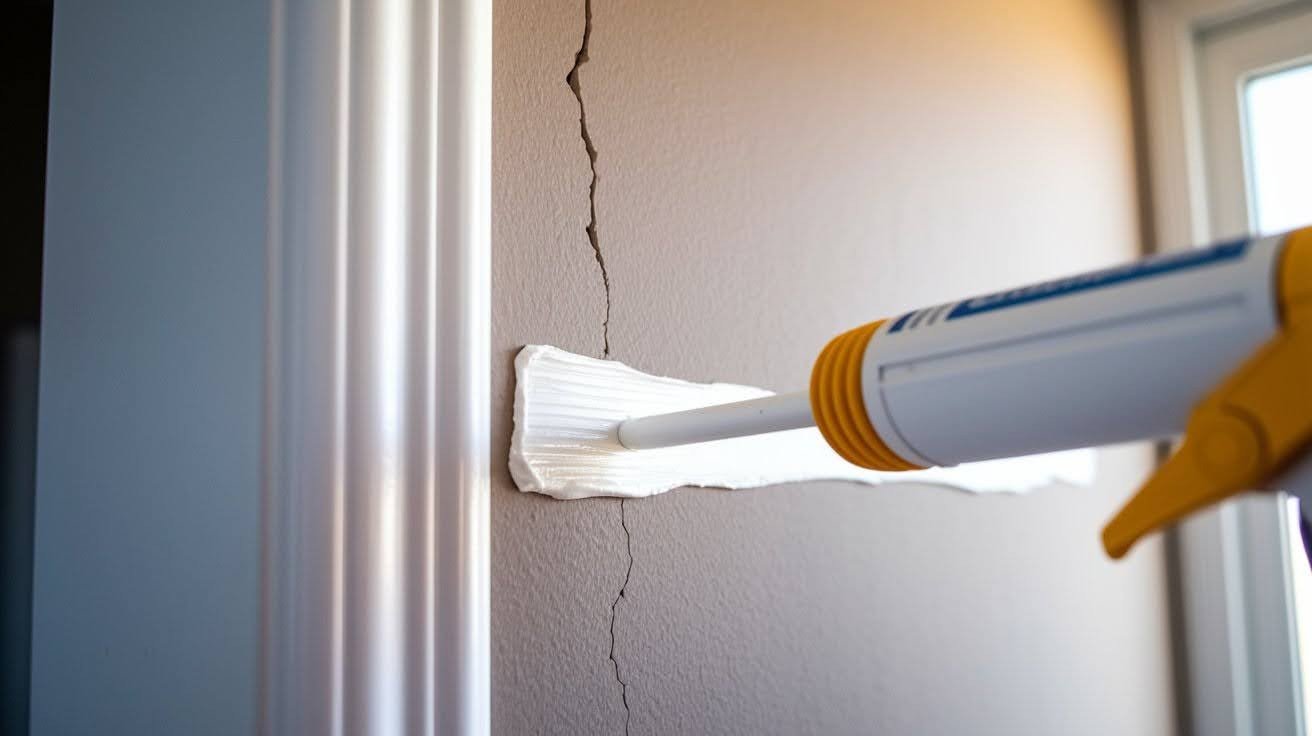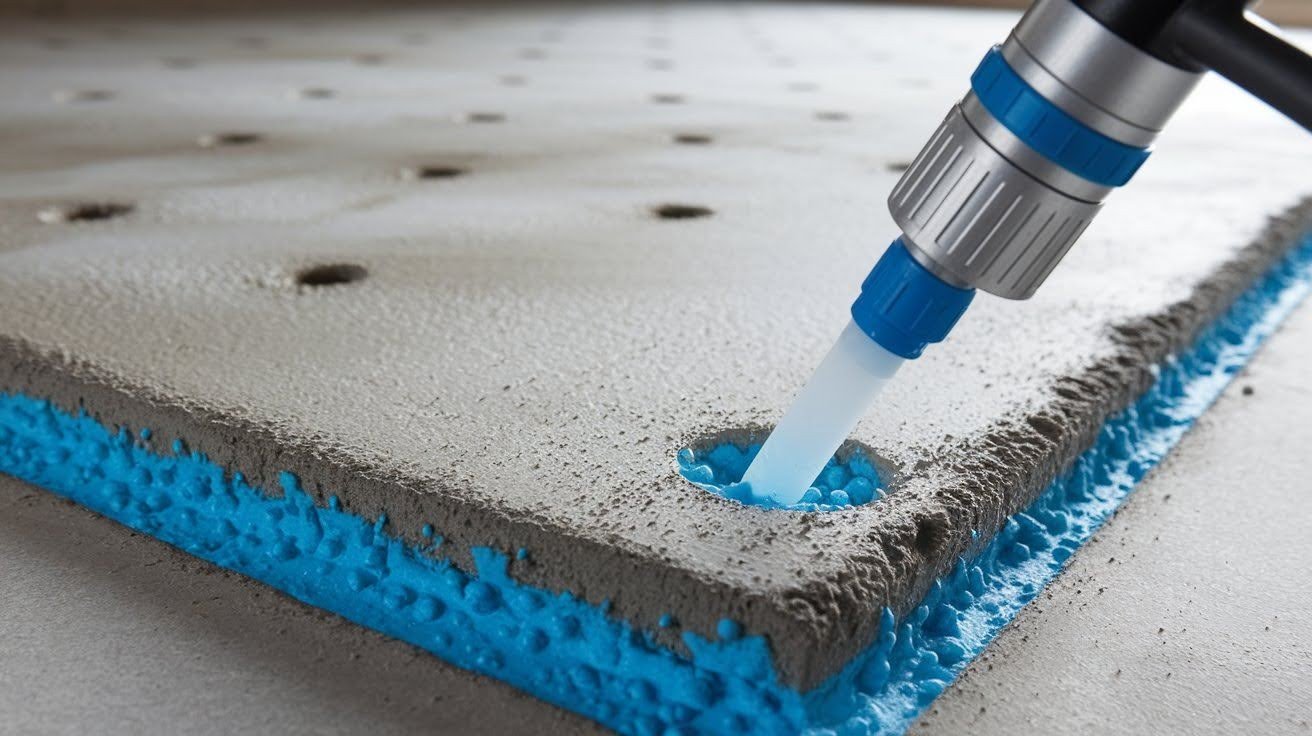Seeing new cracks in your home can be scary. Many homeowners panic when they notice settling cracks in house walls or foundations. But not all cracks mean serious trouble.
As a foundation repair expert, I help homeowners understand the distinction between normal settling and genuine structural issues. Most settling cracks in house structures are harmless and happen as your home adjusts to changes in soil and weather.
This guide will teach you how to identify normal settling versus dangerous cracks. You’ll learn simple repair methods and know when to call experts. Understanding these basics can save you money and give you peace of mind.
Ways to Fix Settling Cracks in Your House
House settling is normal, but fixing visible cracks keeps your home looking good and prevents bigger problems. Here are proven methods to handle different types of settling cracks in house structures.
1. Use Joint Compound for Minor Drywall Cracks

Joint compound works best for tiny hairline cracks that are 1/16 inch or smaller. These thin cracks often appear where walls meet ceilings or in corners as your house adjusts to temperature changes.
Clean the crack first by removing loose paint or debris. Apply a thin layer of compound with a putty knife, smooth it flat, and let it dry completely. Sand the area gently once dry.
Wait 24 hours before painting over the repair. Choose paint that matches your wall color closely. This simple fix handles most minor settling cracks in house drywall without professional help.
2. Apply Paintable Caulk for Small Wall Cracks

Paintable caulk is perfect for cracks in corners where walls meet or around door frames. This flexible material moves with your house as it settles, preventing cracks from coming back quickly.
Choose caulk that matches your wall color or can be painted over. Cut the tube tip at a 45-degree angle for smooth application. Apply steady pressure while moving along the crack.
Smooth the caulk with your finger or a damp cloth right away. Paint over it once it’s fully dry, usually after 2-4 hours. This method stops drafts and looks much better than leaving cracks open.
3. Install Mesh Tape for Recurring Drywall Cracks

Some cracks keep coming back even after you fix them. Self-adhesive mesh tape gives these problem areas extra strength to handle house movement without cracking again.
Place the mesh tape over the clean, dry crack. Press it down firmly so it sticks well. The tape should cover about one inch on each side of the crack for best results.
Apply joint compound over the tape in thin coats. Let each coat dry before adding the next one. Sand smooth when dry, then prime and paint to match your wall.
4. Use Concrete Crack Filler for Foundation Cracks

Small foundation cracks that don’t leak water can be fixed with concrete crack filler. Only attempt this on stable cracks that aren’t getting bigger or showing other warning signs.
Hydraulic cement works well for cracks up to 1/4 inch wide. Polyurethane fillers stay flexible and handle small movements better. Clean out loose concrete and debris from the crack first.
Mix the filler according to package directions. Push it deep into the crack and smooth the surface. Keep the area damp while it cures if using hydraulic cement. Check the repair after a few months.
5. Inject Polyurethane Foam for Slab Lifting

Professional polyjacking uses polyurethane foam to lift sunken concrete slabs. This method works when the soil under your foundation has compressed and caused settling cracks in the house foundation.
The process involves drilling small holes in the concrete and injecting expanding foam underneath. The foam fills voids and lifts the slab back to its proper level slowly and carefully.
This technique has limits and won’t work for severely damaged foundations or active settling. Call professionals for this repair since improper injection can cause more damage than it fixes.
6. Apply Carbon Fiber Reinforcement for Wall Stabilization

Minor bowing in basement walls can be stopped with carbon fiber strips. These strong materials prevent walls from moving further while allowing small settling movements that won’t cause new cracks.
DIY carbon fiber kits are available, but installation must be perfect to work properly. The wall surface needs thorough cleaning and proper primer application before placing the strips.
Professional installation often comes with monitoring and warranties. Check the repair every six months to make sure the wall isn’t moving. This solution works best for early-stage wall problems.
7. Install Helical Piers for Foundation Stabilization

Serious foundation settling needs professional helical pier installation. These deep steel supports transfer your home’s weight to stable soil layers far below the surface.
This solution works when your foundation has settled because of weak soil conditions. Piers are screwed deep into the ground until they reach solid soil or bedrock for permanent support.
Expect higher costs for this repair, but most companies offer long-term warranties. The process usually takes several days and may require temporary relocation while work is completed.
8. Improve Drainage to Prevent Future Settling

Poor drainage around your foundation causes soil changes that lead to settling cracks in house structures. Fixing water problems now prevents worse issues later.
Grade the soil around your home so water flows away from the foundation. Clean gutters regularly and make sure downspouts direct water at least 6 feet from your house.
Consider installing French drains if water pools near your foundation. These underground systems collect and redirect water away from problem areas. Good drainage is the best long-term prevention method.
9. Monitor and Document Before Any Repairs

Take photos and measurements of all cracks before starting repairs. This documentation helps you track whether cracks are growing or staying the same size over time.
Use a ruler to measure crack width and mark the ends with a pencil. Date your photos and measurements. Wait several months before deciding on expensive repairs to see if cracks are still active.
Schedule professional inspections if cracks grow quickly or new ones appear often. Sometimes waiting and watching is smarter than rushing into costly repairs for normal settling.
Expert Tips for Managing House Settling Cracks
Managing settling cracks in house structures requires both quick action and careful patience. The key is knowing which cracks need immediate attention and which ones can wait.
- Keep the soil around your foundation evenly moist but not soaked
- Take monthly photos of any cracks to track changes over time
- Fix small cracks quickly to prevent water damage and bigger problems
- Call professionals for cracks wider than 1/4 inch or growing fast
- Install proper drainage before attempting foundation repairs
- Monitor basement walls for bowing or horizontal cracks
- Keep trees and large shrubs away from foundation walls
- Check for new cracks after storms or extreme temperature changes
New homeowners should expect some settling in the first few years. Most settling cracks in house structures appear gradually and stay small. Document everything and don’t panic over minor cosmetic issues.
Conclusion
Most settling cracks in house structures are normal and can be fixed with simple methods. Small drywall cracks need just joint compound or caulk, while foundation issues may require professional help.
The key is knowing the difference between cosmetic problems and serious structural issues. Take time to monitor cracks before spending money on repairs.
Quick action helps when cracks are growing or letting in water. Professional inspections give you peace of mind and expert advice about necessary repairs versus cosmetic fixes.
Remember that some house settling is normal. Focus on proper drainage and regular maintenance to prevent the most serious problems. When in doubt, get professional opinions before making expensive repair decisions.
Frequently Asked Questions
How Long Does It Take for a New House to Stop Settling?
Most new houses settle for 1-3 years after construction. Major settling usually happens in the first year, with smaller adjustments continuing as materials dry and soil stabilizes.
Can Weather Changes Cause New Cracks to Appear?
Yes, temperature swings and humidity changes make materials expand and contract. You’ll often see new hairline cracks appear in spring and fall when the weather changes the most.
Should I Fill Small Cracks or Leave Them Alone?
Fill cosmetic cracks that bother you, but monitor any crack for growth first. Avoid covering up cracks that might signal structural problems without a professional assessment.
How Much Does a Professional Foundation Inspection Cost?
Foundation inspections typically cost $300-600. This includes visual assessment, measurements, and a written report with repair recommendations and cost estimates for any needed work.
Are Settling Cracks Covered by Home Insurance?
Standard insurance rarely covers settling damage since it’s considered normal wear. Coverage may apply if settling results from covered events like plumbing leaks or storms.

